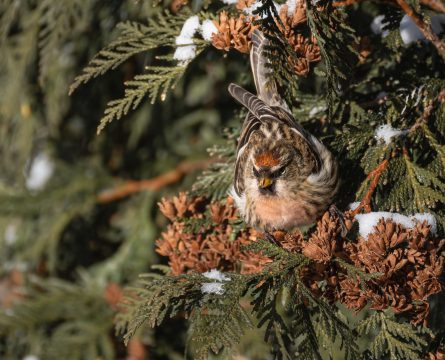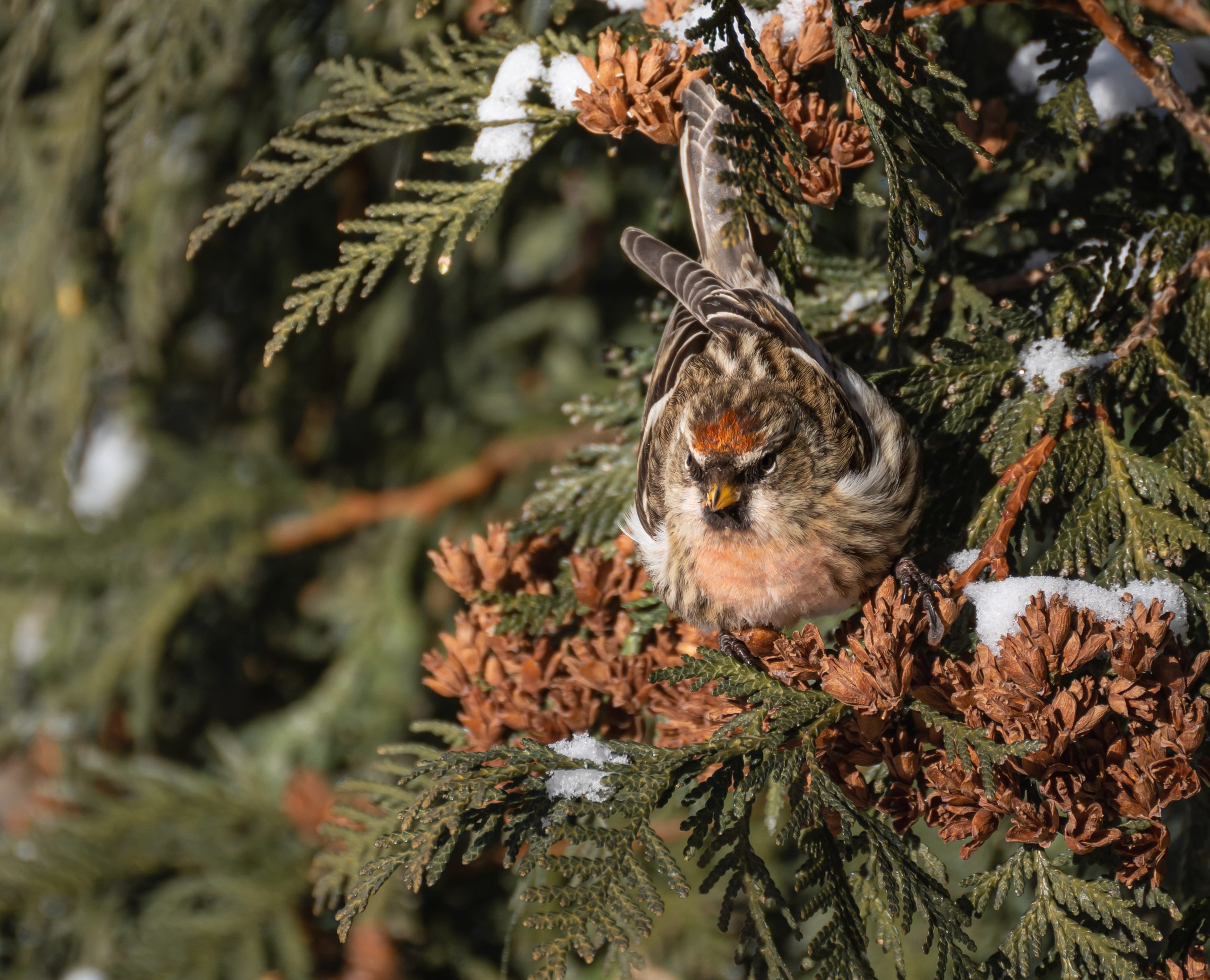Bird of the week: Common Redpoll
About: A brown-backed finch with brown and white streaking on the sides and a white belly. They have a dark red spot on their head, and males have a pinkish wash across their chest.
Where to find this bird: Redpolls particularly like eating small seeds of trees and shrubs and catkins, but they will visit feeders as well. They are an irruptive species and so can be easily found some years, while other years they are nearly impossible to find.
When to find this bird: Mid-November–early April, but populations fluctuate drastically from year to year.
Fun fact: Redpolls are hardy finches that can withstand temperatures as low as -65°F. During cold winter nights, they will tunnel up to four inches under the snow for insulation.

The Finch Forecast
Every winter, birders await the annual Finch Forecast from the Finch Research Network (FiRN). It is a projection of which finches will irrupt south from out of the boreal forests and delight bird enthusiasts further south, both on bird outings and at their feeders at home. Many species from the finch family are highly irruptive, meaning that their populations and distribution change drastically from year to year based on food availability and population booms and busts.
Many birds that breed in boreal and high elevation forests, such as pine siskins and red crossbills, rely on good cone crops that vary greatly from year to year, variations that push the birds to migrate in search of food. Because of this cycle, in some years birds are absent, while in others they are easily found and quickly deplete feeders. The Finch Forecast looks at food sources and eBird reports to predict how and where finches will show up across America over the winter months.
This year, due to an above-average cone crop in Alaska and Newfoundland, alongside poor cone crops throughout much of the boreal forests and above-average cone crops along the coasts, we will be seeing many finches as they are pushed south in search of food. This year is a particularly good year for spotting pine siskins, as they have spread south in search of food.
The Whitefish Point Bird Observatory in Michigan has tallied over 56,000 individuals since August, with 19,260 on Oct. 19 alone. This means it’s a great time to look for flocks of them in birches, weedy fields and visiting feeders —they like nyger and black oil sunflower seeds.
Another finch on the move this winter is the purple finch, which is moving southward throughout the Midwest as food crops in Ontario and Manitoba are depleted. These beautiful finches are also frequent visitors to black oil sunflower feeders, so get a feeder up if you want a chance to spot one out your window!
Redpoll movement is expected to be a bit more limited this year, as a good alder crop has been reported from the boreal forest, so many may choose to stay closer to home.
While you’re out looking for some of these birds, you might start wondering, “Are all these birds really finches?” or perhaps “Why are they named crossbills, redpolls and siskins?” Well, I can not tell you where these names came from, but I can assure you that they are all indeed in the family Fringillidae, though they are in different genera.
If you want to know more about the happenings of our hungry little finch friends, check out the Finch Forecasts report and irruption updates at finchnetwork.org.

